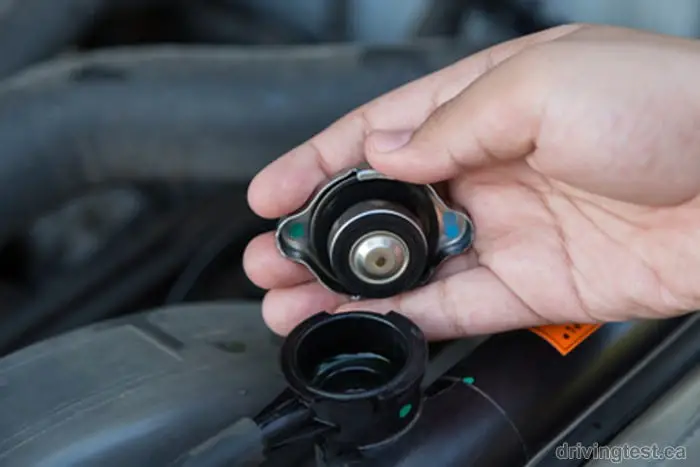A car coolant leak can be a vexing problem. If you see coolant sitting on the ground where your car was parked, or notice that the coolant reservoir is constantly at low levels, you need to find the source of the leak quickly. Ignoring the problem can lead to catastrophic results, such as your car overheating and causing major damage to the engine.
Before you begin with the job of fixing a coolant leak, you need to gather the materials you’ll need for the job. It’s a good idea to wear old clothes as well as protective gloves and goggles. You should also have on hand a large box made of cardboard, sealant for radiators, and a razor blade.
The first step is to locate the leak. Sometimes, locating the leak is easy since you see the coolant dripping or spraying from the source. Other times, the coolant hits some other parts in the engine bay and runs along them before falling to the ground, making locating the leak’s source a difficult job. Park the car on a level area and disassemble the box so that it’s flat. Slide the box under the car and leave the setup for at least eight hours. Inspect the cardboard for leaks, helping you pinpoint the problem area. Look under the car’s hood at the area above the leak on the cardboard and look for other signs of a leak, like coolant pools or damaged hoses. You might have to feel around for wetness in the different areas of the engine compartment.

If you find that the leak is coming from a weakened hose clamp, you must first loosen the clamp and slide it a few inches from where it was sitting on the hose, look at the end of the hose for any tears or cuts. If you find such damage on the end of the hose, cut it out using the razor blade, then reattach the clamp on the good part of the hose, making sure to tighten it securely.
When a hose is the source of the leak, you will be able to see cracking or can squeeze the hose and feel that it is brittle. You must remove the old hose by loosening the clamps before pulling the hose off of its fittings. You can then purchase a replacement hose and install it in the same place, attaching the fittings securely.
Sometimes the radiator is the source of a coolant leak. You need to look closely at the sides of the radiator to see if they are plastic or not. Sometimes this takes scratching the material with a sharp tool, like a screwdriver. If the material is plastic, you will have to replace the entire radiator. If not, you can use a sealant. This involves opening the cap on the top of the radiator and pour the sealant inside. Of course, you should never remove the cap from a radiator if you have just driven the vehicle, so allow it to cool off for at least a couple of hours if that is the case.